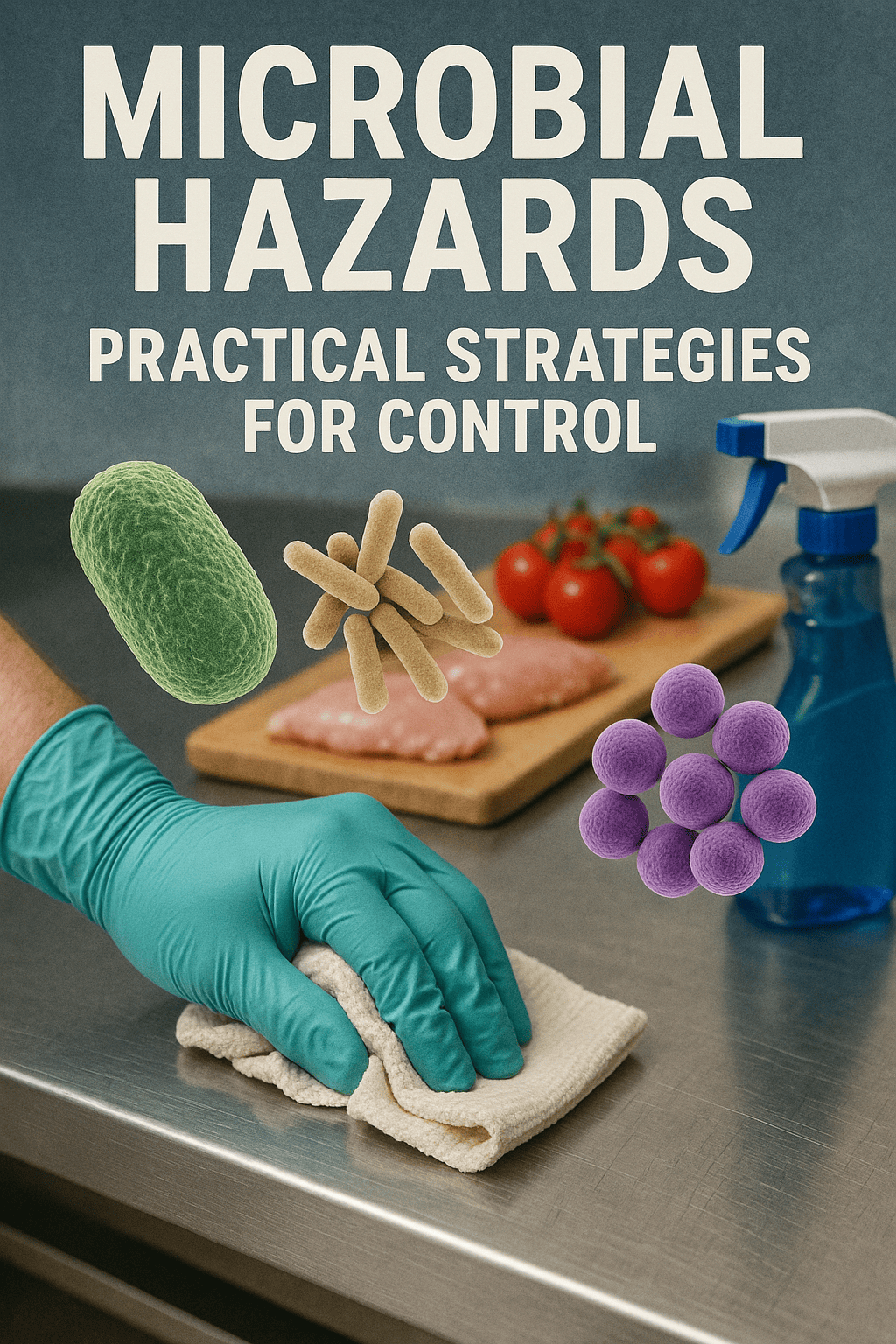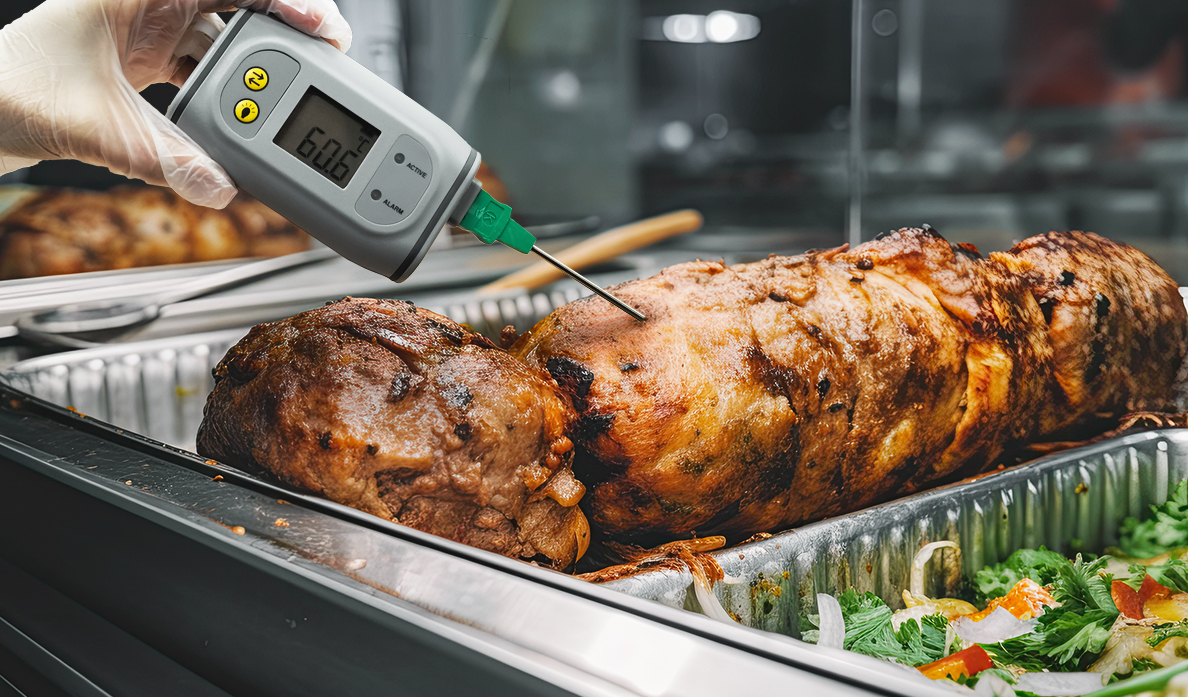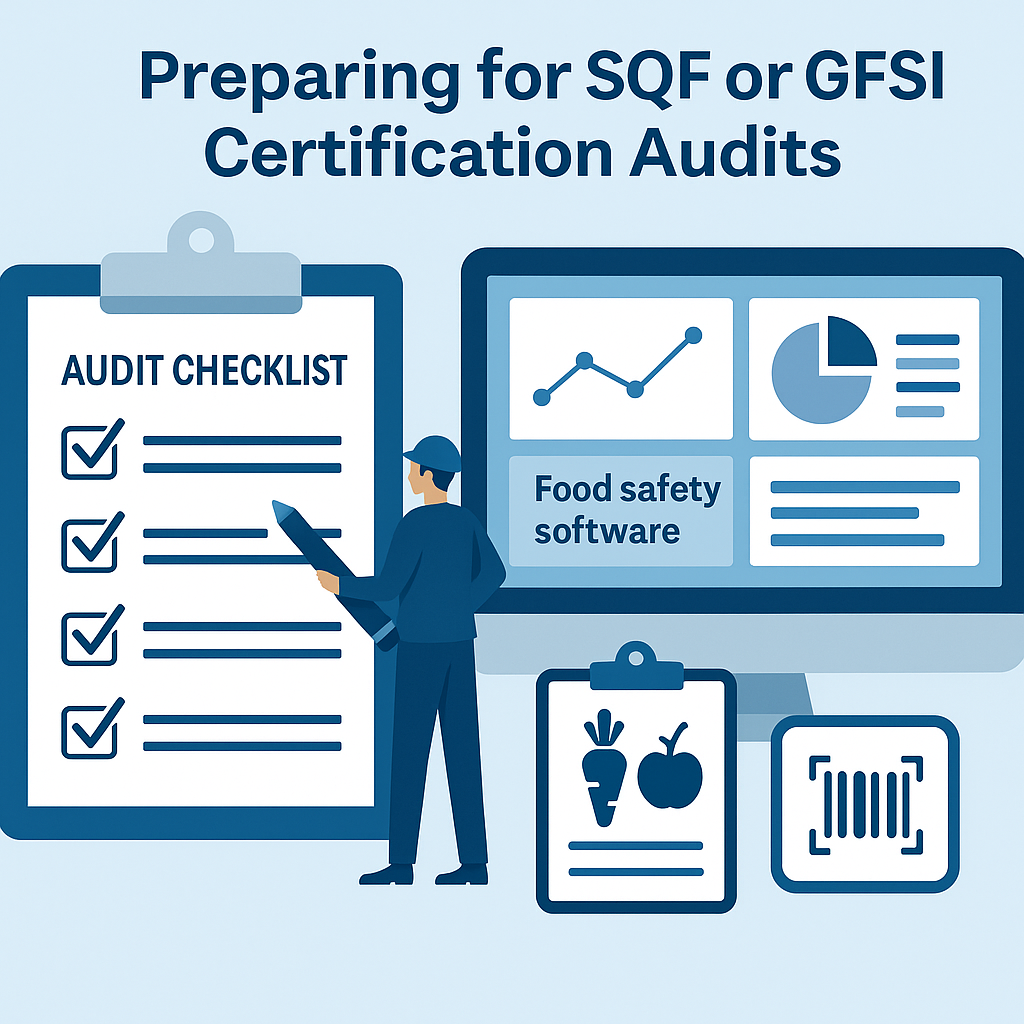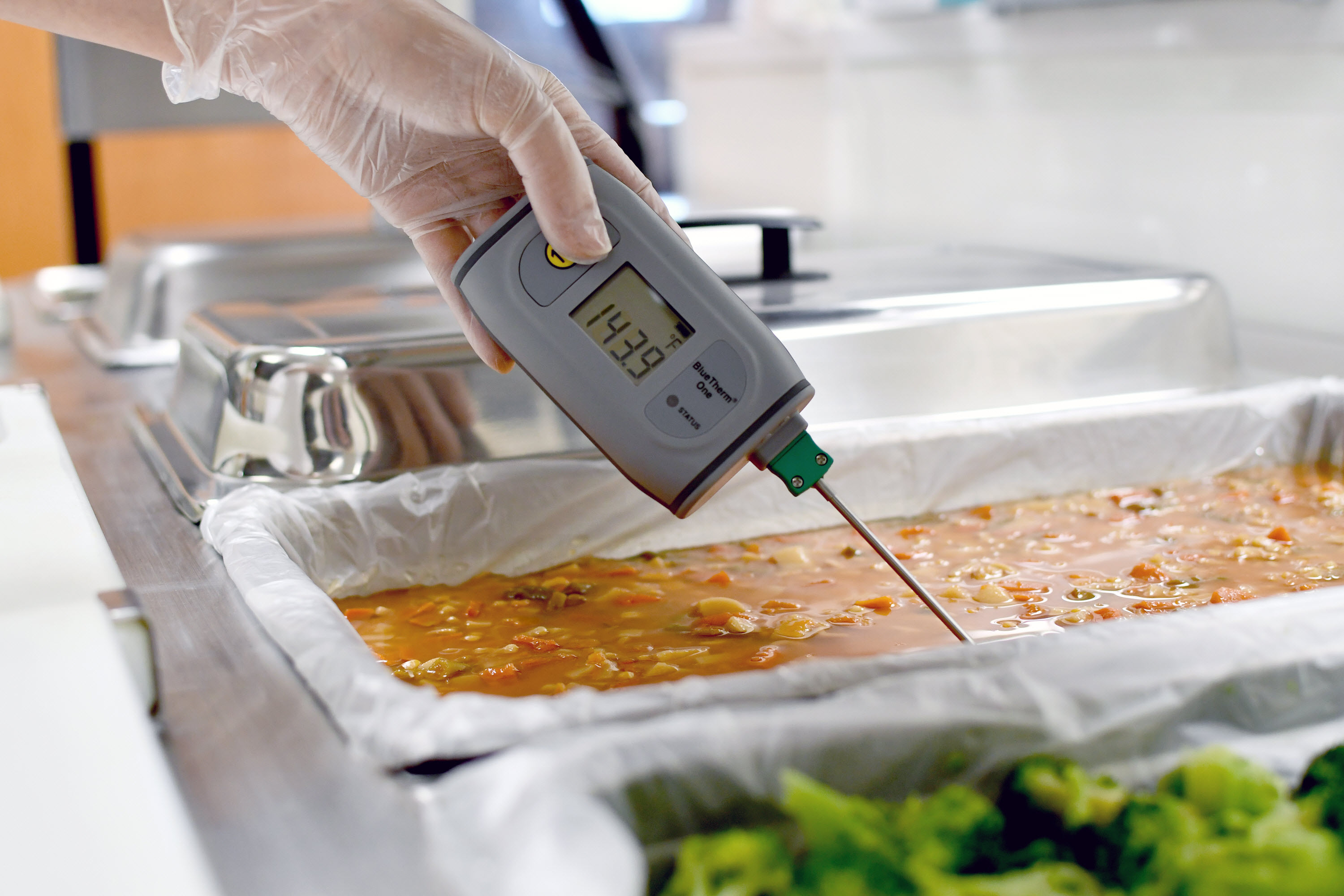What Inspectors Look For During a Food Safety Audit
Food safety audits can feel like final exams: you either prove control or you expose gaps. The best-run sites treat audits as routine, high‑value reviews of how well the system works—not as a once‑a‑year scramble. This article explains, in depth, what inspectors and auditors actually look for, how they test your system, and how to prepare step by step with clear examples. We’ll also show where digital tools like food safety software and Food traceability software reduce risk, save time, and raise audit scores.
1) The Audit Landscape in 60 Seconds
Before we zoom into the checklist, it helps to know what “flavor” of audit you’re facing:
-
Regulatory inspections (e.g., CFIA, FDA, state/provincial authorities) check legal compliance and public health risk controls.
-
Certification audits (e.g., SQF, BRCGS, FSSC 22000) go deeper on system design and effectiveness against GFSI‑benchmarked standards.
-
Customer/second‑party audits focus on their brand risk and specific requirements (e.g., allergen claims, supplier controls, social responsibility).
Regardless of type, auditors seek three things:
-
Design: Is your program built to control known hazards? (HACCP/HARPC, prerequisite programs, training, validation.)
-
Execution: Do you follow your own procedures every day? (Records, monitoring, verification.)
-
Effectiveness: Does the system actually work? (Trends, CAPA, low incidents, strong traceability.)
2) What Inspectors Look For (and How They Test It)
Below are the core elements auditors probe—what they look at, how they test, and the evidence that earns confidence.
A. Document Control & Recordkeeping
What they look for: Current, approved procedures (with version control); complete, legible, timely records; and an index showing where to find things. Missing or outdated documents are an easy non‑conformance.
How they test: Pick a process (e.g., cooking, cooling, labeling) and ask for the SOP, the last training record, the most recent monitoring logs, and the last three verifications. They compare what’s written to what operators actually do.
Evidence that wins: Clean master list, revision histories, controlled distribution, and records that are contemporaneous (filled in at the time, not “end of shift”). Digital records in food safety software help prove timestamps and data integrity.
B. HACCP/Preventive Controls and Validation
What they look for: A hazard analysis that is specific to your products and processes; validated critical limits; monitoring, verification, and corrective actions that match real risk.
How they test: “Walk the line” from raw receiving to shipping, asking where hazards are controlled. They’ll sample a CCP (e.g., cook step at ≥ X°C for Y minutes) and follow the evidence chain: monitoring logs, calibration certificates, deviations, and product dispositions.
Evidence that wins: Scientific validation (e.g., lethality studies, challenge studies, or recognized regulatory guidance), tight CCP logs, and prompt corrective actions with documented review.
C. Prerequisite Programs (PRPs)
What they look for: Sanitation, personal hygiene, water/ice quality, chemical control, glass/brittle plastic policy, foreign‑material control, waste handling, and utilities management are robust and routinely verified.
How they test: Ask for the sanitation SSOP, pre‑op inspection sheets, chemical inventory and Safety Data Sheets, and swab results. They check if frequencies match risk and if non‑conformances trigger effective CAPAs.
Evidence that wins: Pre‑op defects trending down, validated detergents/sanitizers, and well‑trained crews with documented refresher training.
D. Allergen Management
What they look for: Accurate label control; segregation/storage; validated cleaning between allergen and non‑allergen runs; and changeover verification.
How they test: Cross‑check formulation, label artwork, and actual labels on the line. They review changeover records and allergen verification (e.g., swab kits or rapid tests) and will ask operators to describe the process.
Evidence that wins: Zero label mix‑ups, positive/negative controls for test kits, and risk‑based scheduling to minimize cross‑contact.
E. Traceability & Recall Readiness
What they look for: One step forward/one step back traceability; lot coding that ties ingredients to finished goods; mock recall results; and the ability to isolate affected product quickly.
How they test: Choose a finished lot and ask you to trace all ingredients and packaging back to suppliers—and forward to customers—within a set time (often 2–4 hours). They verify how much product is in‑house, in transit, or with customers.
Evidence that wins: End‑to‑end linkages, accurate quantities, and documented communications during mock recalls. Food traceability software reduces search time to minutes and provides a robust audit trail.
F. Supplier Approval & Incoming Verification
What they look for: Risk‑based supplier approval (audit certificates, questionnaires, specs); COA verification; and clear receiving criteria.
How they test: Pull a high‑risk ingredient and ask for the approved supplier file, latest audit certificate, spec, COAs, and receiving records. They’ll check if COA parameters are verified at an appropriate frequency.
Evidence that wins: Up‑to‑date supplier statuses, automatic reminders for expirations, and blocked‑receiving controls for unapproved suppliers.
G. Sanitation & Environmental Monitoring (EM)
What they look for: A cleaning plan matched to risk; EM that targets harborage points; and rapid, effective response to positives (especially for Listeria in RTE environments).
How they test: Review zoning map, site list, and swab trends; ask for root‑cause analyses on any positives; and visually inspect hard‑to‑reach areas.
Evidence that wins: Seasonally adjusted frequencies, demonstrated CAPA discipline, hygienic design improvements, and decreasing trend of positives in zones 2–3.
H. Personnel Practices & Training
What they look for: Training matrices linked to job roles; onboarding and refresher plans; and observable good practices (handwashing, glove changes, jewelry control).
How they test: Interview operators and supervisors. Pull three recent hires and check whether training records match their tasks. Watch behaviors at handwash stations and entrances.
Evidence that wins: Role‑based training, competency checks, multilingual materials, and supervisors who coach in real time.
I. Equipment Calibration & Preventive Maintenance
What they look for: Calibration for devices that impact safety (thermometers, metal detectors, scales); PM schedules that prevent breakdowns causing food safety risk.
How they test: Request calibration certificates, check tolerances, verify daily checks (e.g., metal detector test pieces), and correlate PM logs with downtime data.
Evidence that wins: On‑time calibrations, clear “out‑of‑tolerance” actions, and well‑documented PM that reduces food safety deviations.
J. Facility Design, Zoning & Flow
What they look for: Logical raw‑to‑ready flow; separation of high‑ and low‑risk zones; controlled traffic patterns; and adequate lighting, drainage, and ventilation.
How they test: Walkthrough from receiving to shipping; smoke tests or airflow diagrams in high‑risk areas; and visual checks for condensate, pooling water, and damaged surfaces.
Evidence that wins: Controlled access between zones, color‑coded tools, hygienic barriers, and prompt facility maintenance.
K. Pest Prevention
What they look for: Licensed provider (or trained internal team), device maps and trends, corrective actions, and structural integrity.
How they test: Inspect interior and exterior devices, door seals, vegetation management, and proof of corrective actions after any sightings or catches.
Evidence that wins: Trending data with low activity and rapid fixes (sealed gaps, improved sanitation, waste controls).
L. Food Defense & Food Fraud Mitigation
What they look for: Vulnerability assessments; controlled access; tamper‑evident seals; and a plan for economically motivated adulteration where applicable.
How they test: Review your risk assessment, training records, and incident drills; check visitor controls and camera coverage.
Evidence that wins: Documented mitigations, periodic reassessments, and alignment with customer/regulatory expectations.
M. Internal Audits, KPIs & Management Review
What they look for: A schedule that covers the whole system; competent, independent auditors; meaningful KPIs; and leadership engagement.
How they test: Read your internal audit reports and CAPA closures; compare trends (e.g., pre‑op defects, EM positives, CCP deviations) presented in Management Review.
Evidence that wins: On‑time internal audits, short CAPA closure times, and leaders who can discuss trends and resource decisions.
3) A Step‑by‑Step Approach to Audit Readiness
Whether your next audit is in two weeks or two months, the following structured approach works. Assign each step to an owner with a due date.
-
Map your products and processes. List SKUs, lines, and shifts; draw the process flow from receiving to shipping. Confirm where hazards are controlled.
-
Refresh your hazard analysis. Re‑evaluate biological, chemical (including allergens), and physical hazards. Ensure CCPs and preventive controls are justified and validated.
-
Tighten document control. Create/verify a master list with current versions. Retire obsolete documents and train staff on changes.
-
Run a records “stress test.” Pick three random lots across lines and trace their complete record set: raw receiving, CCP monitoring, verifications, calibrations, sanitation, and release. Fix gaps immediately.
-
Validate and verify cleaning. Review SSOPs, pre‑op findings, and EM trends. Conduct targeted deep‑cleans where risk or positives cluster.
-
Proof allergen control. Audit label approvals, storage segregation, and changeover verification. Perform rapid‑test swabs to confirm.
-
Confirm supplier status. Ensure high‑risk suppliers have current certification or risk assessments; verify COA checks are happening at the right frequency.
-
Test traceability with a timed mock recall. Set a 2‑hour target from finished goods back to raw lots and forward to customers with quantities and locations.
-
Close CAPAs and trend your KPIs. Prioritize recurring issues; assign root causes and verify effectiveness. Prepare a one‑page dashboard for leadership.
-
Run a pre‑audit walkthrough. Have a fresh set of eyes (internal or external) conduct a mini‑audit with operator interviews. Fix visible and systemic issues.
Digital systems like food safety software can compress steps 3–9 dramatically by centralizing SOPs, automating version control, timestamping records, triggering allergen changeover checklists, and generating mock recall reports in minutes.
4) Examples: How Inspectors Follow the Evidence
Example 1: Allergen Label Change
A customer spec changes from “may contain” to a strict “free from” claim. The auditor asks:
-
Where is the updated spec and label artwork stored? Who approved it and when?
-
Show training records for the packaging team on the new label.
-
Demonstrate the line clearance/changeover procedure between allergen and non‑allergen runs.
-
Provide allergen verification results from the first three runs after changeover.
Strong outcome: Documented approvals in the master list, training logs tied to employee roles, successful negative swabs at worst‑case locations, and no label variances. A small controlled trial run with extra verification provides bonus confidence.
Example 2: Environmental Monitoring Positive
A Zone 3 floor drain swab returns presumptive Listeria. The auditor asks:
-
Where is the EM plan and risk‑based site list?
-
Show the investigation: expanded swabbing, vectoring, and sanitation response.
-
What changed in frequency, tools, or hygienic design to prevent recurrence?
Strong outcome: A documented CAPA shows immediate containment (stopped traffic, targeted sanitization), expanded negative follow‑ups, redesigned drain covers, and a sustained decrease in hits over 8 weeks. Management Review notes the trend and resource allocation to upgrade tools.
Example 3: Mock Recall on a Composite Product
A finished lot of soup contains five ingredients and two packaging materials. The auditor says: “Start the clock.” Within 90 minutes you produce:
-
Raw lot numbers and suppliers with COAs and receiving checks.
-
Batch tickets, CCP logs, calibrations, sanitation pre‑op, and release approvals.
-
Distribution list with quantities by customer, including what remains on site.
Strong outcome: Accurate, complete data with reconciliation to inventory. Food traceability software generates forward/backward linkages and formatted customer notifications ready to send.
5) Common Red Flags (and the Quick Wins)
-
Records completed at the end of shift → Train on contemporaneous entries; use electronic timestamps.
-
Out‑of‑date SOPs in production → Control distribution; remove uncontrolled copies; switch to digital access via line tablets.
-
Calibration certificates expired → Implement automated reminders; quarantine devices until recalibrated.
-
Label artwork not version‑controlled → Centralize artwork with approval workflows; verify at start‑up and at each roll change.
-
Weak allergen changeovers → Add visual aids and checklists; verify with rapid tests until process is stable.
-
EM hotspots recur → Perform true root‑cause analysis (design, traffic, condensation) and document engineered fixes, not only more chemicals.
-
Supplier files missing → Assign ownership per commodity; monthly exception reports for expiring certificates.
-
Mock recalls take all day → Map data flows; integrate ERP/WMS with traceability tools; pre‑write customer/agency templates.
6) KPIs for Leaders: Proving Control and Driving ROI
C‑level leaders want more than “we passed.” They want trend visibility and ROI. Suggested metrics:
-
Right‑First‑Time Records (%): Share of records completed without rework or missing fields.
-
CAPA Closure Time (days): Median time from issue to verified effectiveness.
-
Environmental Positives (rate): Hits per 100 swabs by zone with trend lines.
-
Allergen Incidents: Near‑misses and label discrepancies per million units.
-
Mock Recall Time: Minutes to complete backward and forward trace with reconciliation.
-
Audit Non‑conformances: Number and severity, trended by root cause category.
With the right digital backbone—Food safety programs enabled by modern platforms—you get real‑time dashboards, automated reminders, and evidence trails that shorten audits and reduce risk exposure.
7) How Digital Tools Reduce Audit Friction
-
Single Source of Truth: SOPs, forms, training, and specs live in one controlled system. Obsolete paper copies vanish.
-
Automated Workflows: Line start‑up checks, allergen changeover verifications, and pre‑op inspections trigger on schedule or by event.
-
Data Integrity: Electronic signatures, timestamps, and role‑based access protect the record. Audit trails show who did what, when.
-
Rapid Traceability: Lot linkage across receiving, production, WIP, and distribution compresses mock recalls from hours to minutes.
-
Trend Analytics: EM heatmaps, pre‑op defect Pareto charts, and CCP deviation trends guide targeted investment and continuous improvement.
In short: digitization makes the system easier to run correctly and easier to prove.
8) Day‑Of Audit Playbook
-
Opening Meeting: Share scope, product list, process map, and a concise risk summary. Introduce SMEs and the audit “war room.”
-
Document Review: Provide a controlled document index. Offer read‑only access to your digital repository so the auditor can self‑serve.
-
Plant Tour: Escort follows product flow. Assign a scribe to log observations and immediate fixes.
-
Operator Interviews: Coach teams to answer what they do, not what the book says—because they match.
-
Daily Wrap‑Ups (for multi‑day audits): Review findings nightly, correct low‑hanging fruit, and line up evidence for the next day.
-
Closing Meeting: Acknowledge findings, agree on timelines, and commit to data‑driven CAPAs. Capture any positives the auditor notes.
9) Putting It All Together
Being “always audit‑ready” is not a slogan; it’s an operating model. Design your system around real risks, execute with disciplined routines, and prove effectiveness with data. Start with a clear map of your processes, keep documents and records tight, strengthen allergen and EM controls, and stress‑test traceability. Use technology intentionally—centralized food safety software and Food traceability software pay for themselves in saved hours, fewer surprises, and stronger customer trust.
If you’d like to see how NORMEX streamlines audits end‑to‑end—from digital SOPs and training to EM trending and rapid recalls—book a short demo here: https://normex.ca/demo.







